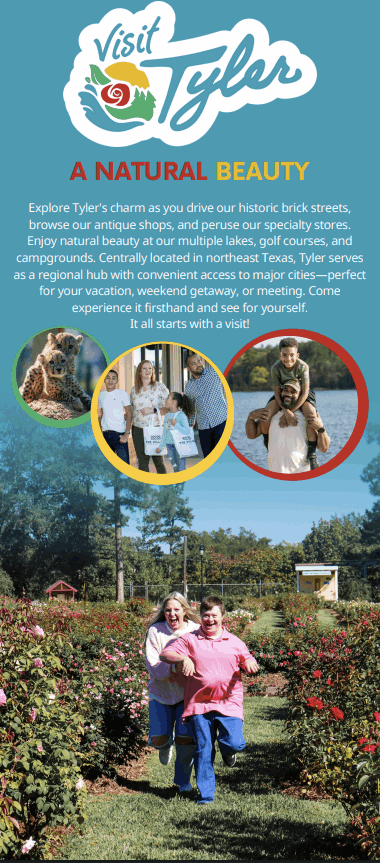History Unveiled: A Journey Through Time
Native Roots and Early Settlement
Long before Tyler existed as a city, this region of East Texas was home to Caddo Native Americans who cultivated the rich land and established extensive trade networks throughout the region. As you walk through Tyler today, you're traversing ground that witnessed the transition from indigenous territory to European settlement beginning in the early 1800s. The lush forests and abundant waterways that first attracted settlers continue to define the landscape, connecting modern residents to the area's historical foundations.
- Caddo tribes inhabited the area for centuries before European settlement
- Mexican land grants in the 1830s brought the first non-indigenous settlers
- Texas gained independence in 1836, opening the door to increased American settlement
- Original pioneers were drawn to the region’s fertile soil and abundant timber resources
The Birth of Tyler
Tyler was officially created in 1846 when the Texas Legislature established Smith County and designated Tyler as its county seat, naming it after President John Tyler. As you explore downtown, you'll notice the traditional courthouse square layout that speaks to the city's intentional design as a center of commerce and governance. This purposeful planning continues to influence Tyler's development today, creating a community that values both heritage and progress.
- Named after President John Tyler, who supported Texas’ annexation
- County seat designation immediately established Tyler as a regional center
- Original town was plotted on 28 acres donated by local landowners
- The courthouse square became the focal point of early civic and commercial life
Civil War and Reconstruction Era
Tyler’s development took a pivotal turn during the Civil War when the city became a manufacturing center for the Confederacy, producing munitions and housing a prisoner-of-war camp. Following the war, Tyler experienced a period of rebuilding and growth, establishing important institutions that continue to serve the community today. This resilience in the face of adversity remains a defining characteristic of Tyler's community spirit.
- Camp Ford, the largest Confederate POW camp west of the Mississippi, was located in Tyler
- The city's ordnance factory produced ammunition for Confederate forces
- Post-war Tyler saw economic diversification and renewed growth
- In 1876, the first public school was established, showing a commitment to education
The Rose Industry Blooms
Tyler's identity was forever transformed in the late 1800s when farmers turned to rose cultivation following the collapse of the fruit industry. The city’s ideal growing conditions launched a new era that shaped both its economy and visual charm. Today, rose gardens and green spaces are woven into the fabric of the city, a living tribute to its agricultural roots.
- First commercial rose farms appeared in the 1880s
- By the 1920s, over half of U.S. roses were grown in the Tyler area
- The first Rose Festival was held in 1933, beginning a cherished tradition
- Tyler’s Municipal Rose Garden opened in 1952, reinforcing its global identity
Oil Boom and Economic Diversification
The discovery of the East Texas Oil Field in 1930 reshaped Tyler’s economy and identity. The city quickly emerged as a vital center for oil logistics and administration, enjoying an era of unprecedented growth. The wealth generated fueled long-lasting improvements to infrastructure and community services, laying the groundwork for Tyler’s modern prosperity.
- The oil field’s discovery in 1930 triggered a population and development boom
- Tyler became an oil services and logistics hub
- Oil revenues helped fund civic institutions like hospitals and schools
- Leaders prioritized economic diversification to ensure future stability
Modern Medical Hub
Since the mid-20th century, Tyler has grown into a premier healthcare destination for East Texas. As a physician, you'll step into a well-established medical tradition that reflects decades of strategic development, transforming local clinics into an expansive and respected healthcare network.
- Mother Frances Hospital (now CHRISTUS) opened in 1937
- Medical Center Hospital (now UT Health East Texas) was founded in 1951
- The University of Texas at Tyler expanded healthcare education starting in the 1970s
- Today’s medical district is one of Texas' largest outside major cities
Twenty-First Century Renaissance
Tyler has embraced a renaissance marked by historic preservation, innovation, and inclusion. Downtown revitalization and institutional expansion reflect a city that values its legacy while building an inclusive, forward-thinking future for residents and newcomers alike.
- Historic downtown buildings repurposed into dining, retail, and living spaces
- UT Tyler’s growth boosts the city's academic and cultural profile
- Entrepreneurial hubs like the Tyler Innovation Pipeline fuel economic development
- Cultural festivals celebrate Tyler’s growing diversity
Throughout its history, Tyler has shown remarkable adaptability. From its native roots and early settlement to oil booms and rose gardens, it has become a place of beauty, resilience, and opportunity. This blend of heritage and progress offers physicians a truly rooted yet visionary community to call home.
